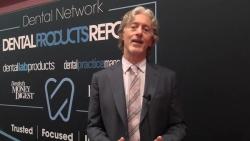- About Us
- Advertise
- Editorial
- Contact Us
- Terms and Conditions
- Privacy Policy
- Do Not Sell My Personal Information
© 2025 MJH Life Sciences™ and Dental Products Report. All rights reserved.
Rising to Their Expectations: How to Keep Patients Smiling in the Dental Chair
Patients arrive in your operatory with an idea of what should happen. Do you know what they expect and whether you will deliver it?
We all have expectations. Sometimes they are based on experience, and other times, they come from comparison to something similar. And if we don't have anything personal to draw upon, we make it up based on stories we've heard or things we’ve watched on Netflix.
Your patients have expectations too. Do you know what they are and if you are delivering them? If not, maybe it's time you did. We take a closer look at why patient expectations are what they are and what you can do to keep them smiling in your dental chair.
Competing with Dr Google
First, it is essential to recognize that there has been a shift in information accessibility. Mark Hyman, DDS, MAGD, an Adjunct Full Professor and Special Assistant to the Office of the Dean at UNC Adams School of Dentistry, says in the "good ole' days," the dental team had proprietary information, and patients did what the team suggested. Now, with the internet and "Dr Google," patients see things without evidence and context and put their trust in that information.
"We can get angry and frustrated about this change, or we can use some fundamental principles of education that will win the day," Dr Hyman says.
When browsing for a "dentist near me," patients will see a wide range of dental content, from articles that describe sealants to videos demonstrating the benefits of implant dentistry to commercials about the wonders of clear aligners. So, patients know more about procedures when they walk through the door. The challenge occurs when patients develop expectations based on self-diagnosis.
"With dentistry, people come in with their expectations and research, and it can be hard to take the doctor's recommendation," Jeff Rohde, MS, DDS, says. "I am not offended by that. Instead, I see it as a chance to talk about this stuff, and I love talking about it."
With a misguided self-diagnosis, Dr Rohde prefers to have a conversation rather than tell patients they are wrong. So, he starts the conversation by asking where they read it. Then, he asks them why they were looking it up and what else they had learned.
Dr Hyman also believes in answering a question with a better question. When he has a patient that reads something on Google and objects to Dr Hyman's diagnosis or treatment plan, he asks, "What if Google is wrong?"
Dr Hyman also uses the “Feel, Felt, Found” objection handling technique with patients. For example, if a patient objects to fluoride treatment, Dr Hyman would say, "I understand how you feel. Many patients have sat right there and told me they felt the same way. However, research has found that fluoride cuts out cavities across the board." He finds that this approach puts his patients at ease.
"There is a temptation to be upset and feel challenged or demeaned, but I want us to stand our ground and smile while asking them to tell us more or how that makes them feel. Keep asking for information like why they came in or their goals for their smile. Be curious. Respectful. Then, reassure them from a professional that they are making the right decision," Dr Hyman says.
Sometimes the patient is looking for what they want to hear rather than what they need to hear. Dr Rohde says it can be challenging to disappoint patients. Still, by elevating the conversation and explaining why they need what you recommend, you can get patients on board with the diagnosis and treatment plan. While it might take longer than it used to, you can create a climate of trust in the operatory so that patients feel heard, even though you might push back and disagree.
"We need to flip our thinking around to remember that they are looking for the answer and are just disappointed with the outcome," Dr Rohde says when patients question his plans in the operatory. "It's all about matching those expectations."
Not Meeting Some Patient Expectations is Good, Too
There are some expectations you don't want to meet. Dental anxiety and dental fear are patient expectations that fall into this category.
Dr Rohde says dental anxiety was already accompanying many patients into the operatory. Add to it the pandemic, and now you have people afraid of dentistry and catching a disease. The war in Ukraine isn't helping with stress levels, either. Dr Rohde says he sees the effects of the rising levels of anxiety based on how many night guards he has made over the last 18 months.
Elevated anxiety and stress can result in short-tempered patients loaded with mental baggage. Dr Rohde says that he and the team remind themselves when the patient lashes out at them that it isn't about the team personally.
"Our job is to care about people and show them compassion even when they are not at their kindest," Dr Rohde says.
Dr Rohde says that initiating those conversations and making people feel accepted for who they are is essential. Since his team has many touchpoints with patients before he sees them, he raises the team's awareness about how they are delivering the elevated experience he wants at the practice. For example, he wants the team to let anxious patients know they are not alone, and if people feel scared, he encourages the team to respond to that in empathetic ways.
He also wants the team to meet patients where they are. If they are not consistent enough with their home care or do not floss often enough, he discourages the shaming approach to clinical diagnosis. Instead, aim for improvement and individualized goals, not perfection. He says that if a patient isn't flossing at all, try to get them to floss once or twice a week. It's not ideal or enough, but it's better than it was.
"What will we accomplish by making someone feel terrible for not flossing?" Dr Rohde says.
Technology Can Help, Too
Dr Hyman uses photography, digital imaging, and digital printing. Also, Dr Hyman is excited about the new Artificial Intelligence (AI) products, like Pearl, that provide an automatic second opinion chairside. He believes that training the office on all these technologies is paramount. Training gets everyone on the same page with educating patients on their oral health. Seeing is believing and can help with treatment acceptance.
Another product he likes is PreVu Smile Simulation Software. He recommends using it as onboarding for new patients. First, you take a smiling photo, a panorex, and a cone-beam computed tomography (CBCT), and in 30 seconds, a simulation is complete. Then, you show it to them and ask the patient what they think and how soon they would like to be finished.
"An objection is not a 'no,' it's a request for more information," Dr Hyman says.
He also says you should dedicate time with the team to train on Digidoc cameras and role-play the patient conversations. The idea is to be curious but not authoritative. Once you have the photos on the monitor, Dr Hyman says the temptation is to lecture patients about what they should do. Instead, he wants the team to say, "Tell me what you see." Then, they should follow up with "how can I help you?"
He also likes hygienists to take a before and after photo for cleanings and show them to the patient. Then, he wants hygienists to ask the patient what they see. He describes a quality photo in front of the patient as liberation for dental teams.
"You have all this equipment. Well, any bozo can buy the equipment. It's how you use it and train on it," Dr Hyman says. "You want to exceed patient expectations and knock their socks off."
When You Can't Meet Patient Expectations Despite Your Best Efforts
But what about when a patient's expectations exceed your patience? Dr Rohde does not allow rude or verbally abusive people to stay patients. Dr Rohde expects the team to be there for patients and bend over backward to provide that elevated experience, but when that isn't enough, Dr Rohde will tell patients that the patient care at his practice isn't a good fit anymore. He thinks dentists should draw the line with these patients and support their teams.
"Even though people are coming in with all these fears and anxiety, and we have to be more patient and compassionate, it doesn't mean we have to be a doormat," Dr Rohde says. "You are not going to be the perfect fit for everyone."
If You Don't Know What Your Patients Want, Ask.
Perhaps most importantly, Dr Hyman says that you don't have to pine for the “good ole' days” when you were the authority and patients did what you said just because you said so. Instead, he encourages the dental team to rise to patient expectations, and if you don't know what they are, ask. Some of the questions that he trains the group to ask are:
- Who can we thank for referring you?
- How can I help you?
- Can you tell me more?
- How does it make you feel?
- What did your last dentist tell you?
- Why did you leave the previous dentist?
- Why did you come in today?
- What are your goals for your health, teeth, and smile?
- Is it essential that you keep your teeth for the rest of your life?
- Please help me understand why you don't want to move forward.
Another important consideration is where your patient is in their life. Generational differences affect how patients view dentistry. For example, Millennials do not have the same perception of dentistry as Baby Boomers. That means connecting with patients at different ages and life stages might require a varied approach. If you treat every patient the same way and assume they want the same things, you could miss out on many opportunities to connect with them and build a relationship. Asking questions and learning about the person in the chair is essential to meeting their expectations.
"It is a joyful way to work when you understand basic human relation principles," Dr Hyman says. "We in dentistry have the greatest thing going. We get to take colossal care of patients and make a profound difference in their life, and very few of them die when we're working on them. It's the greatest profession in the world. So, work hard on yourself and give the patient the courtesy of getting to know them by asking, 'Why did you walk in today?'"



